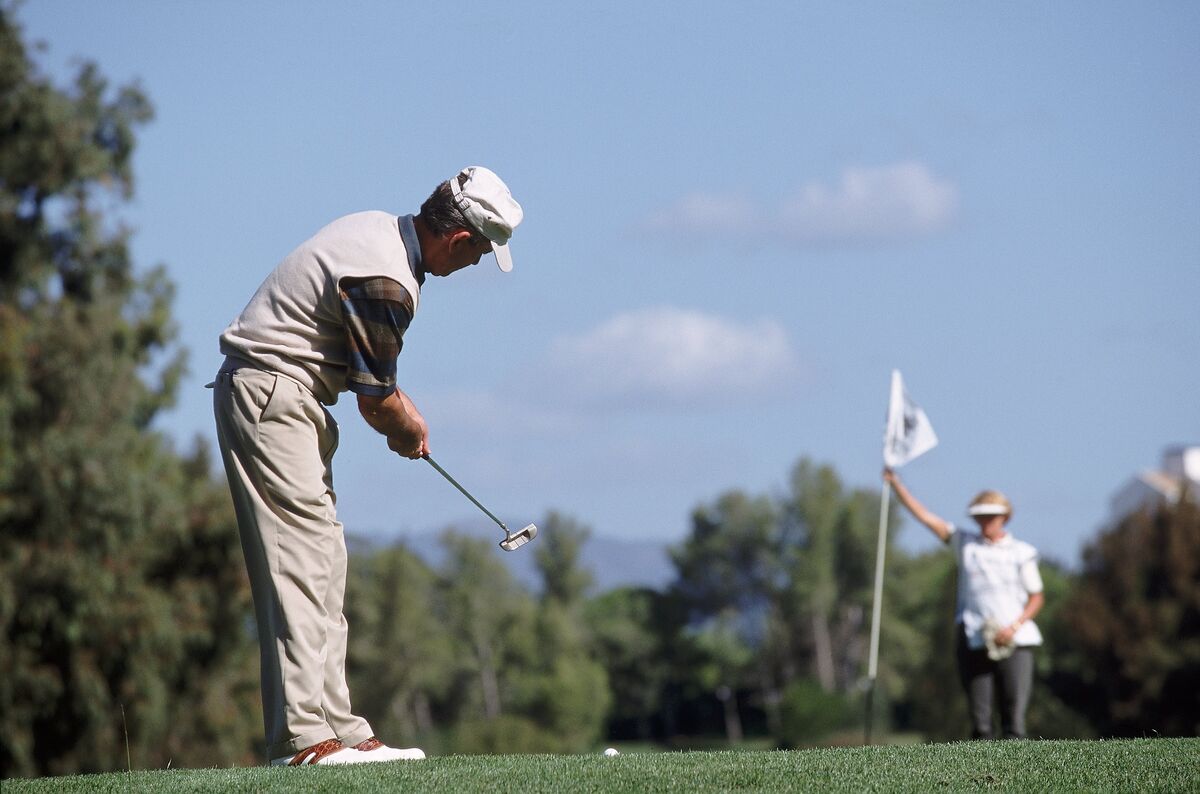When to Play a Texas Wedge (and How to Do It)

Mastering the Texas wedge is a great way to simplify your short game, save some strokes, and earn some style points with your playing partners.
What is a Texas Wedge
A Texas wedge is a shot from off the green that, if all goes according to plan, rolls up onto the green and close to the hole. Most people think of hitting a putter from the fringe or a few yards from the green as a Texas wedge, but you can also hit a Texas wedge with other clubs, and from much farther away.
How to Hit a Texas Wedge
I’m about 40 yards from the hole, and most people would take out a sand wedge, pitch the ball in the air, hope to fly it the right distance, and then guess whether or not it’s going to stop. The Texas wedge is an alternative way to play this shot, more of a British Open style shot. I’m going to run the ball up.
It’s easier to judge how far I’m going to hit the ball if I keep it along the ground. It’s always easier to putt than it is to pitch, and this is closer to a putt. To hit this shot, I’m going to take a pitching wedge or 9-iron and use a chipping technique with the following fundamentals:
- Play the ball back in my stance
- Press my hands forward
- Put most of my weight on my lead (left) side
- Using a firm-wristed stroke, take my arms back and through the ball
- Fly the ball about halfway to the green, and let it roll the rest of the way to the hole
The most important aspect of hitting the Texas wedge is judging how far the ball will roll, and where it will stop. Carve out 10-15 minutes from your next practice session and work on these rollers from 10-40 yards off the green. Use a few different clubs, including a putter and short iron or pitching wedge, and get a feel for how far each will roll out from different distances. Once you start to gain that feel, implementing the Texas wedge on the course is a breeze.
When to Hit a Texas Wedge
When you have a flat surface, an unobstructed line between you and the hole, and a manageable distance – say 40 yards and in – consider hitting a Texas wedge. You’ll also want to make sure you have good grass to work with, preferably down grain, that will allow the ball to roll up to the hole.
If there’s a bunker or rough between your ball and the green, you’ll need to get the ball in the air and hitting a Texas wedge won’t suffice. But if you’ve got a clear path to the hole, letting the ball roll to the hole is a great way to keep your game predictable.
Why Use a Texas Wedge?
The theory is the same in chipping, your worst chip will be better than your worst pitch. There's no reason to put the ball in the air if you don't have to. The ball is more predictable when it’s closer to the ground, and it’s easier to judge distance hitting a Texas wedge than trying to fly the ball a precise yardage and hoping it will stop where you need it to.
This technique is similar to a simple putting stroke, so it eliminates variables and minimizes the risk of the worst-case-scenario misses: a shank, chunk, or skull. Just having the low runner in your short-game repertoire for whenever you need it is helpful. The more shots you have in your bag, the better off you’ll be.
Why is it Called a Texas Wedge?
One of golf’s most famous Texans, Ben Hogan, is credited with coining the term “Texas wedge.” It’s a geographically appropriate strategy, as the relatively flat and firm ground during the Texas summer presents a great opportunity to roll the ball up to the hole from off the green.